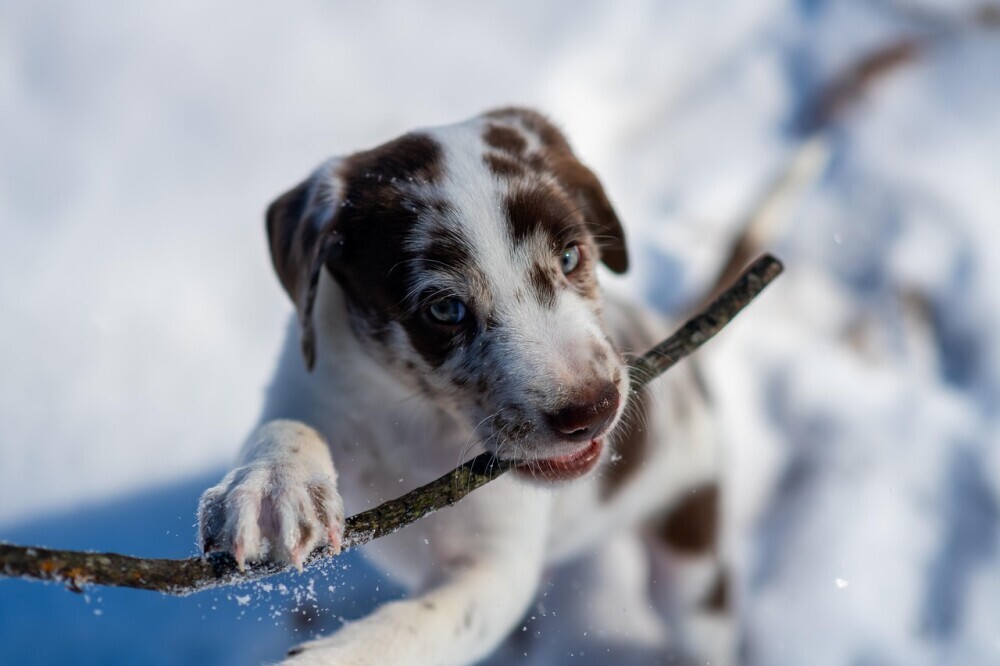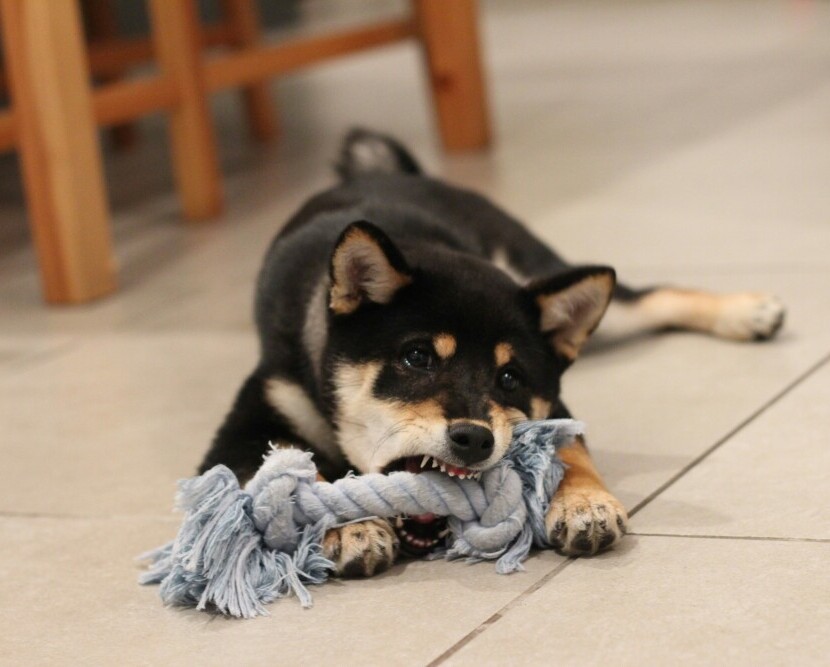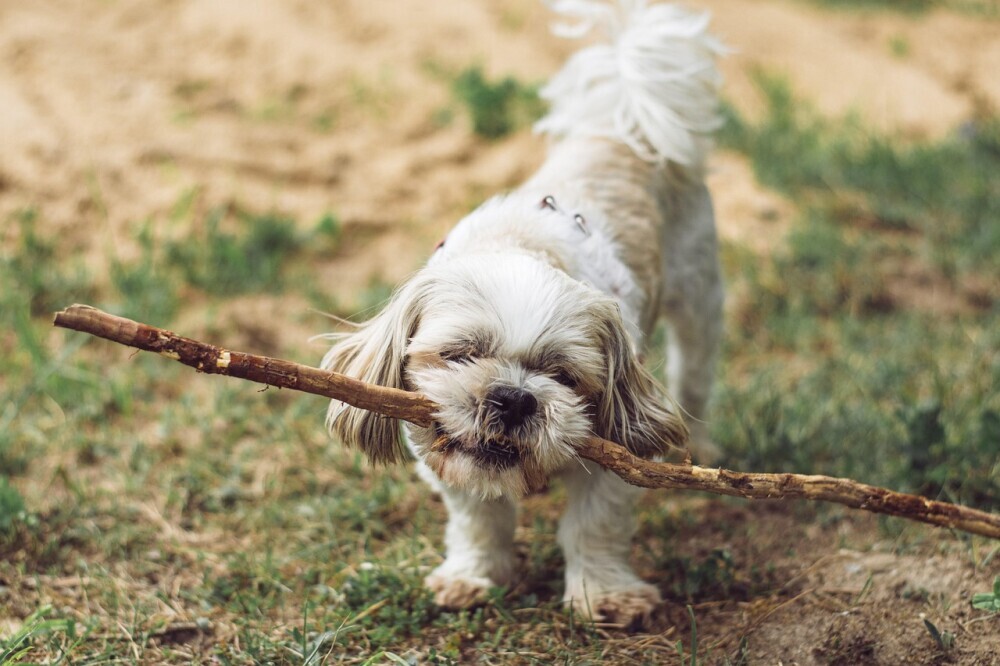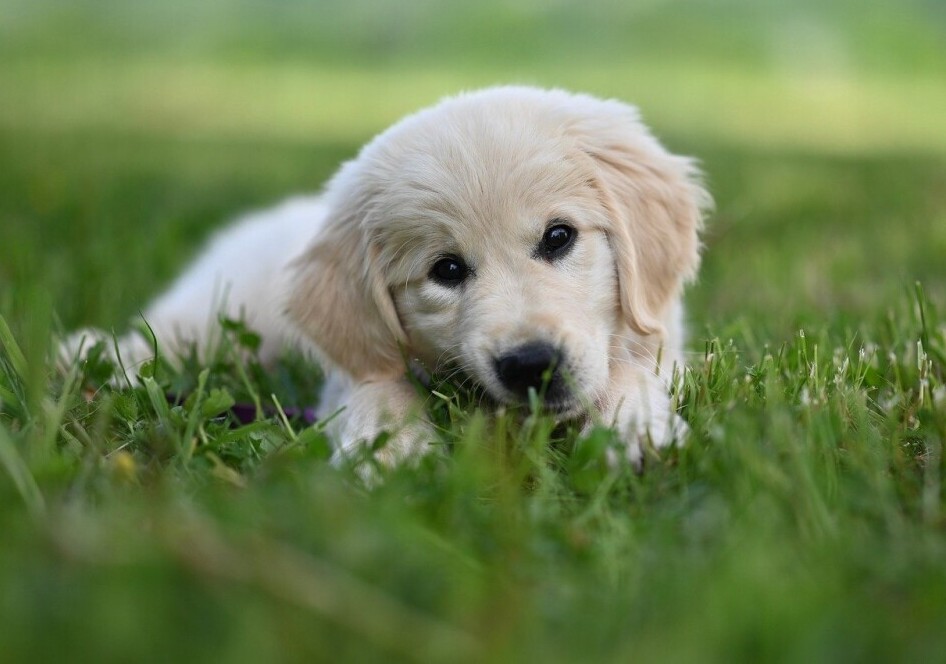
A few of the links in this post are affiliate links. If you buy something, we may earn a small commission (no extra bones from your wallet 🐾). Thanks for helping support the site and all of the dog adventures!
Puppies explore their world with their mouths. It’s part of growing up and learning how to interact. When a puppy bites during playtime, it usually means they’re just practicing their play-fighting moves, which is essential for their development. Today we’re here to talk about their mouthy habits and how you can handle them.
While it might feel alarming when your furry little pal goes for your hand, understanding the reasons behind the biting can ease a lot of stress. In most cases, it’s playful and innocent, not a sign of aggression. These little guys are learning about boundaries and using their teeth is just part of that process.
Now, if you’re seeing signs that seem a bit too rough or if it feels more like snarling than playful banter, it might be helpful to observe their behavior in different settings. Sometimes puppies, like us humans, just have off days or moments when they’re unsure how to manage their energy. Tracking when and how often the biting happens can offer insights into whether it’s playful or something that might need extra attention.
It’s also good to note that patterns in puppy biting can vary. Just like children, each pup has their own temperament and energy level. Some might bite more out of sheer excitement, while others do so because they’re restless or anxious. Observing these nuances can help you tailor your approach to addressing this common behavior. Your puppy is bound to nibble or chew at some point, so how to handle it?
Biting and chewing are normal puppy behaviors. Learn how to manage them as part of a full training plan in The Ultimate Puppy Training Guide.

Managing and Redirecting Puppy Biting Behavior
Once you’ve wrapped your head around why puppies bite, figuring out how to manage it becomes a breeze. Training your puppy requires a bit of strategy and a ton of patience. Let’s talk tactics to redirect that biting without squelching their playful spirit. The key is to get them to bite the RIGHT things and to stop chewing things we don’t want destroyed.
First off, teaching bite inhibition is key. It’s kind of like showing them how to have fun without crossing that line into painful territory. You can do this by yelping or making a sharp “ouch” when they bite too hard—just like their littermates would do. This helps them learn to control their bite pressure. This is how puppies communicate to let the other know they are playing too hard.
Engage your puppy with interactive play sessions. Toys that encourage them to chase and bite are great for burning off that boundless puppy energy. It keeps them happy and saves your fingers. Remember, consistency in using toys instead of your hands is crucial. Get their urge to chew out of their system, so when play time is over they can take a break.
Also, consider incorporating short training sessions into daily routines. Teach basic commands like “sit,” “stay,” or “leave it.” It isn’t just about the commands; it’s about establishing who’s in charge and building respect. Short bursts of training followed by play can effectively channel biting tendencies into learning moments.
Finally, if your puppy seems particularly bitey, try to find out what’s triggering it. Is it excitement? Boredom? Hunger? Address these needs directly. Sometimes they just need a little extra exercise or a nap to reset. Every puppy is different, so tweak these methods to fit your situation. Look for the root cause of the chewing to help you figure out how to correct it.
Handling chewing effectively is easier with reward-based methods. Compare approaches in Positive Reinforcement vs. Punishment: Which Works Best?

Protecting Your Home: Encouraging Appropriate Chewing Habits
Puppy-proofing your space is like baby-proofing, minus the electrical outlet covers. Puppies are curious explorers, and chewing is part of their journey in understanding the world. Prioritize safety by identifying potential hazards around your home. Cords, shoes, and furniture can become immediate chew targets for a teething puppy. Don’t give them a chance to chew on something they shouldn’t, put anything important or delicate away so your pup won’t get any ideas.
To steer that chewing urge in the right direction, you’ll want to provide a variety of chew toys. Material matters—try toys designed specifically for teething, like rubber or nylon, as these can withstand their bite. A diverse selection of textures and flavors keeps their interest up and jaws busy away from your favorite sneakers. Let them test their chewing out on toys.
Besides toys, a bit of DIY: You might find that freezing a wet washcloth for them to gnaw on can work wonders, especially during the intense teething phases. This simple trick can provide relief for sore gums, and it’s an inexpensive way to soothe your little furball and expend their chewing habit.
Another handy tip involves redirecting their attention when they’re eyeing your stuff. If your puppy goes for something they shouldn’t, calmly replace it with a toy that’s theirs. Reinforce this redirection with positive reinforcement—lots of praise or a little treat can go a long way to shape their behavior. This helps them establish what can be chewed on without getting in trouble.
Keeping your things safe doesn’t mean isolating your puppy from everything fun in the house. Consider setting up a dedicated play area—somewhere they can have fun while you know your items aren’t in jeopardy of becoming chew toys. By keeping their environment stimulating and secure, you’ll find the right balance between exploration and protection.
Short, consistent sessions help teach bite inhibition. See practical tips in 10 Minute Training Sessions for Busy Dog Owners.

Navigating the Teething Phase: Supporting Your Puppy Through Growing Pains
The teething phase is a significant chapter in your puppy’s life, usually spanning the first few months up to about six months old. During this time, new teeth push through their gums, which can be as painful as it sounds.
Recognizing that your puppy is teething is important. Key signs include increased chewing, drooling, or visible discomfort around their mouth. You might even notice a small tooth or two around the house. They’re like little treasure hunts, with less glamour and more slobber.
To help them through this itchy, gnawing phase, provide toys specifically made for teething. Soft rubber toys are adaptable to their needs, allowing both soothing and satisfying chewing. Chewables that you can freeze often work wonders, giving them relief from the discomfort.
Cold therapy isn’t just for sprained ankles. Chilled carrot sticks or apple slices can be a tasty, healthy treat that doubles as a chew toy, offering both nutrition and relief. Just make sure any snacks you give are appropriate for a puppy’s diet and they won’t choke on it.
It’s all about creating a smooth journey for your fur buddy. This is a crucial growth stage—not just physically but behaviorally—so be patient and monitor their progress. The effort you put into guiding them through teething pays off as they grow into well-adjusted, happy and non-chewing companions.
Structured learning and routine can reduce frustration-related chewing. Learn more in How to Teach Your Dog to Use a Bell for Potty Time.
